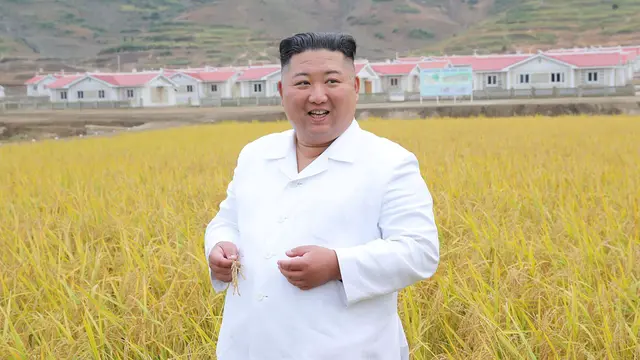The newly inaugurated standard gauge railway line between Kenya’s Mombasa and Nairobi is very important to the integration of eastern Africa, Rwandan Minister of Finance and Economic Planning Claver Gatete said.
“It was a very successful project, thanks to China’s support for Kenya,” Gatete told Xinhua in an interview at his office in downtown Kigali, the Rwandan capital.
Rwanda's Minister of Finance and Economic Planning Claver Gatete makes remarks during a panel discussion on investing in adolescents to improve nutrition, education, etc as part of the IMF and World Bank's 2017 Spring Meetings, in Washington, US, April 20, 2017.
The new railway, known as the Kenyan SGR, started cargo and passenger services a week ago in ceremonies attended by Kenyan President Uhuru Kenyatta and Chinese State Councilor Wang Yong, the special envoy of Chinese President Xi Jinping.
Gatete said leaders recognize the value of standard gauge rail lines as part of the Northern Corridor, which links Kenya with Uganda, Rwanda and Burundi; and the Central Corridor, which starts from Tanzania, through Rwanda and then leads to Burundi, to reduce the cost of doing business.
“The one in Kenya is really something to be proud of,” he said. “We are working to make sure that we discuss at the regional level how we can also benefit.”
Passengers of the Standard Gauge Railway (SGR) line constructed by the China Road and Bridge Corporation (CRBC) are seen outside the Nairobi Terminus in the outskirts of Kenya's capital Nairobi, May 31, 2017.
The 480-kilometer, 3.8-billion US dollar Mombasa-Nairobi SGR was constructed by the China Road and Bridge Corporation, with 90 percent of the funding coming from China.
Gatete said much has been done to advance east African integration, with the removal of non-tariff barriers and cutting the time needed for cargo shipments from Mombasa to Kigali from the original 21 days to about five days.
The facilitation of free movement of people, including easier access to work permits and the introduction of common visas, the removal of voice and data roaming fees, and the harmonization of the electricity grid all helped consolidate the integration.
The minister described the relationship between Rwanda and China as “excellent.”
“We are very happy about that cooperation in all areas… at the technical level, development level,” he said.
“At the international cooperation level, the relationship between Rwanda and China can be a very good example for the rest of the world,” Gatete said.
Passenger train stewardesses ride inside one of the new coaches to operate on the Standard Gauge Railway (SGR) line constructed by the China Road and Bridge Corporation (CRBC) and financed by Chinese government in Kenya's coastal city of Mombasa, May 29, 2017.
Rwandan President Paul Kagame met Chinese President Xi Jinping last March during his visit to Beijing, where the two leaders agreed to upgrade bilateral strategic cooperation..
Over the past decades, Rwanda managed to achieve an average growth of 8.0 percent, cutting the poverty level from 79 percent in 1995 to 39 percent in 2014. Gatete attributed the success to the leadership and vision of President Kagame, the importance the country attaches to free universal primary and secondary education and the focus on science, technology, research and innovation, as well as technical and vocational training.
Known as one of the world’s cleanest governments, Rwanda practices a policy of zero tolerance toward corruption.
Gatete said for leaders and people in responsible positions, everybody, from the president to anyone else, has to declare his or her wealth at the end of each June to the ombudsman.
“Corruption… if you do it, you know the consequences,” he said. “You cannot reduce it to zero, but at least people know the consequences.”
The minister also talked about Rwanda’s efforts in coping with the aftermath of the 1994 genocide, which left more than 1 million Tutsis and some moderate Hutus dead, and the measures taken to lift the country from the dark past.
Wreaths can still be seen outside the main entrance to the five-story building where Gatete works. They were laid there in a memorial ceremony last Friday for 104 former Ministry of Finance and Economic Planning employees who perished in 1994.
(CGTN)
 简体中文
简体中文

